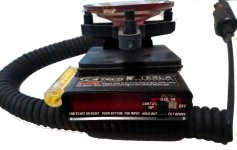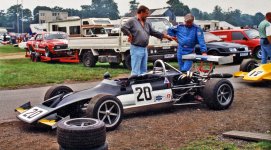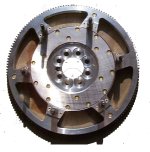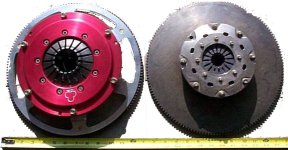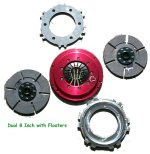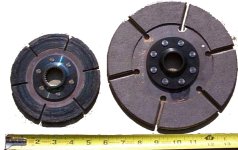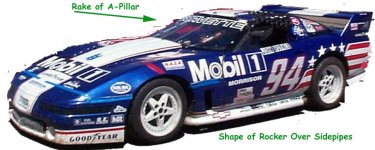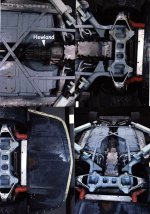Roscobbc
Moderator
One of the things that has always fascinated me about the earlier L88 powered C3 Corvettes is actually how fast they could be under race conditions back in the late 60's and early 70's often with only modest power outputs. When I originally have my engine built-up the intention was to 'replicate' the HP figure of a period L88 but in a far more driveable, relatively economical package, using a larger capacity engine to achieve it.
The amazing thing to me is that in the early 70's privateers were racing L88 Corvetttes for several years after all of the major teams had moved on to other cars. For me it is the near 200 mph speeds at LeMans the privateer teams were seemingly still achieving with engines supposedly 'de-tuned' to low/mid 500hp for reliability and longevity over the 24 hour race.
It's truely fantastic that in '68/'69 an L88 with an extra low 2.53 rear end was timed at 213 mph on the full length Mulsanne Straight reputedly with 600+ hp.
All this got me in to a conversation with Andy Maskery (Essex Rep) about transmission ratios of Muncie and Borg Warner 4 speed gearboxes vs rear end ratios and the effects they might have on theoretical maximum speeds in individual gear ratio on our respective cars.
Andy's C3 has a 383 stroker, BW 4 speed and 3.08 rear end. Mine with its stroker 489, Muncie M21 and the same rear end ratio as Andy's - (3.08). Obviously both cars having the same rear end ratios maximum speeds rpm for rpm would be similar provided that each car could 'pull' a specific rpm figure.
Andy drew-up a spreadsheet for his car showing ratios and rpm's. I did the same for mine plus an additional sheet showing it with a 2.73 'economy' gear available from GM as an option on certain years. There are some interesting conclusions with Andys car and mine sharing the same rear end ratio. Whilst the M21's ratios are quite close and allow for potential 70 mph + speeds in first gear...... in fourth (direct) gear Andy's car (theoretically again) is actually faster at the same rpm's owing to slightly taller tyres. Even more fascinating is the difference a 2.73 rear end would make to my car at maximum achieveable speed (presuming that aerodynamics would allow and the engine would hold together at 6500 rpm +)
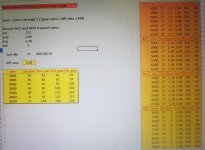


The amazing thing to me is that in the early 70's privateers were racing L88 Corvetttes for several years after all of the major teams had moved on to other cars. For me it is the near 200 mph speeds at LeMans the privateer teams were seemingly still achieving with engines supposedly 'de-tuned' to low/mid 500hp for reliability and longevity over the 24 hour race.
It's truely fantastic that in '68/'69 an L88 with an extra low 2.53 rear end was timed at 213 mph on the full length Mulsanne Straight reputedly with 600+ hp.
All this got me in to a conversation with Andy Maskery (Essex Rep) about transmission ratios of Muncie and Borg Warner 4 speed gearboxes vs rear end ratios and the effects they might have on theoretical maximum speeds in individual gear ratio on our respective cars.
Andy's C3 has a 383 stroker, BW 4 speed and 3.08 rear end. Mine with its stroker 489, Muncie M21 and the same rear end ratio as Andy's - (3.08). Obviously both cars having the same rear end ratios maximum speeds rpm for rpm would be similar provided that each car could 'pull' a specific rpm figure.
Andy drew-up a spreadsheet for his car showing ratios and rpm's. I did the same for mine plus an additional sheet showing it with a 2.73 'economy' gear available from GM as an option on certain years. There are some interesting conclusions with Andys car and mine sharing the same rear end ratio. Whilst the M21's ratios are quite close and allow for potential 70 mph + speeds in first gear...... in fourth (direct) gear Andy's car (theoretically again) is actually faster at the same rpm's owing to slightly taller tyres. Even more fascinating is the difference a 2.73 rear end would make to my car at maximum achieveable speed (presuming that aerodynamics would allow and the engine would hold together at 6500 rpm +)



Last edited:


